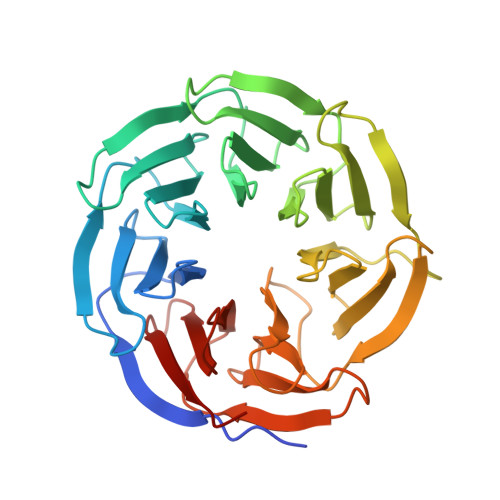Interaction with WDR5 Promotes Target Gene Recognition and Tumorigenesis by MYC.
Thomas, L.R., Wang, Q., Grieb, B.C., Phan, J., Foshage, A.M., Sun, Q., Olejniczak, E.T., Clark, T., Dey, S., Lorey, S., Alicie, B., Howard, G.C., Cawthon, B., Ess, K.C., Eischen, C.M., Zhao, Z., Fesik, S.W., Tansey, W.P.(2015) Mol Cell 58: 440-452
- PubMed: 25818646
- DOI: https://doi.org/10.1016/j.molcel.2015.02.028
- Primary Citation of Related Structures:
4Y7R - PubMed Abstract:
MYC is an oncoprotein transcription factor that is overexpressed in the majority of malignancies. The oncogenic potential of MYC stems from its ability to bind regulatory sequences in thousands of target genes, which depends on interaction of MYC with its obligate partner, MAX. Here, we show that broad association of MYC with chromatin also depends on interaction with the WD40-repeat protein WDR5. MYC binds WDR5 via an evolutionarily conserved "MYC box IIIb" motif that engages a shallow, hydrophobic cleft on the surface of WDR5. Structure-guided mutations in MYC that disrupt interaction with WDR5 attenuate binding of MYC at ∼80% of its chromosomal locations and disable its ability to promote induced pluripotent stem cell formation and drive tumorigenesis. Our data reveal WDR5 as a key determinant for MYC recruitment to chromatin and uncover a tractable target for the discovery of anticancer therapies against MYC-driven tumors.
- Department of Cell and Developmental Biology, Vanderbilt University School of Medicine, Nashville, TN 37232, USA.
Organizational Affiliation:



















